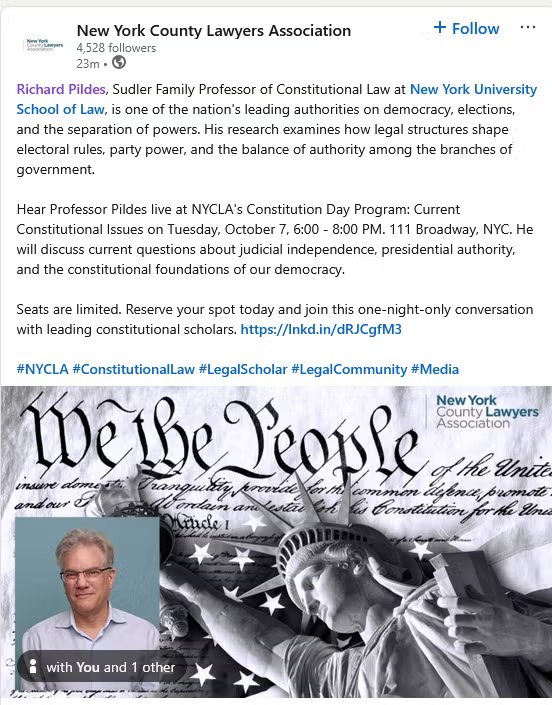At the NYU Democracy Project, William Galston publishes an essay today on reining in presidential emergency powers. Here’s an excerpt:
The most important and urgent constitutional issue of our era is the relentless growth of executive power under presidents of both parties, a process that has moved into overdrive since the beginning of President Trump’s second term. Some of this reflects the near collapse of Congress as a functioning branch of government, preventing progress on key issues such as immigration and tempting presidents to achieve by fiat what they cannot attain through legislation. The Supreme Court’s embrace of theories such as the “unitary executive” has accelerated the expansion of presidential power. But there is another dimension of this development that deserves more attention than it has received.
Unlike many documents of its kind, the U.S. Constitution gives the executive no explicit emergency powers. But there are many circumstances in which only the president can move with the speed and ability to mobilize resources that the situation requires. In response, Congress from the beginning of the republic has passed legislation delegating emergency powers to the president. There are now more than 130 such powers, some of which have been on the books for more than two centuries. Many are loosely drafted, inviting abuse….
There is only one solution—a genuinely bipartisan effort to reform the National Emergencies Act. During President Trump’s first term, not a time noted for concord between the parties, such an effort received broad support across party lines. It would have terminated every presidentially declared emergency after 30 days unless Congress voted to approve the declaration and would have prohibited the use of filibusters to stall such action. In the fall of 2024, a similar measure was approved unanimously in the House Transportation and Infrastructure Committee, and in the Senate Homeland Security and Governmental Affairs Committee by a vote of 13 to 1. If this measure had reached the floor, it might well have passed.
Although this initiative fell short of the finish line, Congress has shown that it can come together when threats to the stability of the constitutional order become too pressing to ignore. After the extraordinary disruption of the electoral process in the wake of the 2020 election, Democrats and Republicans came together in 2022 to enact a sweeping reform of the Electoral Count Act, a dangerously ambiguous law enacted in response to the disputed election of 1876. Among other improvements, the reform made it clear that the vice-president’s role in counting the votes of the Electoral College is purely ceremonial and leaves no role for the vice president to exercise independent judgment to resolve disputes. The bill passed with a comfortable majority in the House and a super-majority of 68 to 29 in the Senate.
It’s time to try again to rein in the emergency powers that constitute a cache of unexploded ordnance at the heart of our constitutional order. This will be challenging, but it’s not Mission Impossible.



